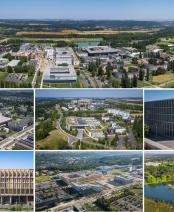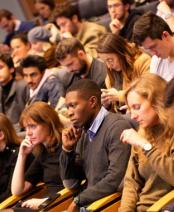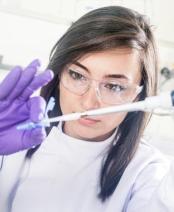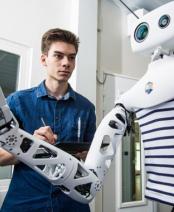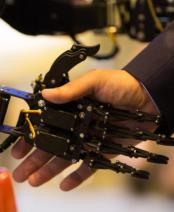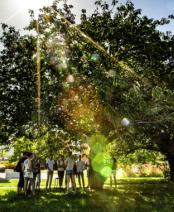Combining sport and science: a winning strategy
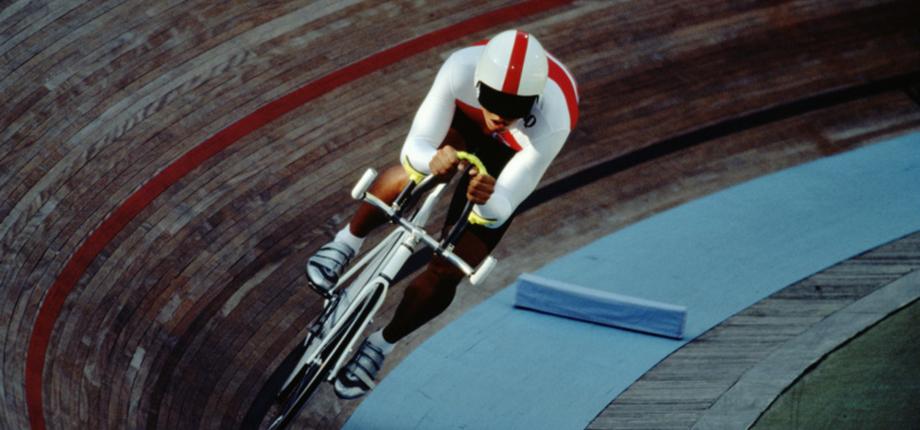
In the sports arena, victory isn't decided by strength, endurance, dexterity or sheer athletic performance alone. You also have to be a strategist to fight your way through the competition to the top step of the podium. But when it all comes down to details and a few thousandths of a second, finding the winning tactic becomes a sport!
In the sports arena, victory isn't decided by strength, endurance, dexterity or sheer athletic performance alone. You also have to be a strategist to fight your way through the competition to the top step of the podium. But when it all comes down to details and a few thousandths of a second, finding the winning tactic becomes a sport!
Here, science can help. As part of her thesis at the Hydrodynamics Laboratory, Alice Boillet is trying to determine the optimal race strategies in rowing and cycling, and more specifically in the case of the team pursuit in track cycling. In this event, two teams of four cyclists chase each other from two diametrically opposite points on the velodrome. The aim is to set the fastest time over 4 kilometers, or to catch up with the opposing team.
Between physics and physiology
How to achieve the best possible time? To answer this question, Alice Boillet works at the interface between physics and physiology with physicist Caroline Cohen from LadHyX and physiologist Laurent Messonnier from the Laboratoire interuniversitaire de biologie de la motricité in Chambéry. "That's my added value," says the young researcher, who has always been interested in biology, from her preparatory class BPSCT (biology, chemistry, physics and earth sciences) before entering École Polytechnique, where she was fascinated by courses in sports physics, to her master's degree in " Biomedical Engineering " at Institut Polytechnique de Paris and now, a PhD. The physical part, based on the equations of motion and the forces involved, models how the power generated by the athlete translates into speed on the bike. The second, physiological, part models the power produced, as well as the fatigue that results and recovery capacities.
Here, science can help. As part of her thesis at the Hydrodynamics Laboratory, Alice Boillet is trying to determine the optimal race strategies in rowing and cycling, and more specifically in the case of the team pursuit in track cycling. In this event, two teams of four cyclists chase each other from two diametrically opposite points on the velodrome. The aim is to set the fastest time over 4 kilometers, or to catch up with the opposing team.
How to achieve the best possible time? To answer this question, Alice Boillet works at the interface between physics and physiology with physicist Caroline Cohen from LadHyX and physiologist Laurent Messonnier from the Laboratoire interuniversitaire de biologie de la motricité in Chambéry. "That's my added value," says the young researcher, who has always been interested in biology, from her preparatory class BPSCT (biology, chemistry, physics and earth sciences) before entering École Polytechnique, where she was fascinated by courses in sports physics, to her master's degree in " Biomedical Engineering " at Institut Polytechnique de Paris and now, a PhD. The physical part, based on the equations of motion and the forces involved, models how the power generated by the athlete translates into speed on the bike. The second, physiological, part models the power produced, as well as the fatigue that results and recovery capacities.
This physiological model is based on the analogy between generated athletic power and an engine with several fuel tanks. There are three such tanks, for each of the energy pathways available to the body: the "ATP" pathway, for adenosine triphosphate, i.e. the final molecule that enables cells to produce energy; the pathway that converts oxygen into energy by oxidizing sugar (glucose); and finally the pathway that also uses glucose, but without oxygen, while producing lactic acid (responsible for muscle fatigue). These reservoirs are interconnected in a way that respects human metabolism. For example, ATP is constantly regenerated by the other two metabolic pathways. And these pathways do not have the same characteristics: the amount of energy that can be mobilized thanks to oxygen is high, but the speed at which it can be used is slower than that of the lactic acid-producing reservoir. On the other hand, this latter reservoir is more limited in size.
Digital twins
This subtle interplay between these energy pathways depends on the type of effort (sprint, middle-distance, long-distance) and the individual athlete. The size of the tanks and connecting pipes is adapted on the basis of their physiological characteristics, such as VO2 max (the maximum amount of oxygen a person can use per unit of time). "We thus create a digital twin for each athlete," explains Alice Boillet.
To find the best strategies for team pursuit races, you need to determine which athletes are taking part in the race, the order of their relays, and the duration and power of these relays. With these parameters, the physics model can determine the team's theoretical time. But it does not indicate whether this is achievable in practice. The digital twins then show whether the powers to be generated are realistic. If so, the strategy becomes a possible option. "We don't test all realistic options, because there would be too many combinations, so I also do numerical optimization to find the best strategies, explains the PhD student. It's not a question of imposing anything, we're here to help athletes and coaches."
At the 2022 World Championships, the scientists' advice on the order and duration of the team pursuit relays was followed. The result: a very good performance rewarded by a bronze medal!" It's difficult to say to what extent the strategy played a part, but it was a very pleasing result," says Alice Boillet. In sport, as in science, rigor and caution are still required. But it bodes well for the 2024 Olympics.
This subtle interplay between these energypathways depends on the type of effort (sprint, middle-distance, long-distance) and the individual athlete. The size of the tanks and concecting pipes is adapted on the basis of their physiological characteristics, such as VO2 max (the maximum amount of oxygen a person can use per unit of time). "We thus create a digital twin for each athlete," explains Alice Boillet.
To find the best strategies for team pursuit races, you need to determine which athletes are taking part in the race, the order of their relays, and the duration and power of these relays. With these parameters, the physics model can determine the team's theoretical time. But it does not indicate whether this is achievable in practice. The digital twins then show whether the powers to be generated are realistic. If so, the strategy becomes a possible option. "We don't test all realistic options, because there would be too many combinations, so I also do numerical optimization to find the best strategies, explains the PhD student. It's not a question of imposing anything, we're here to help athletes and coaches."
At the 2022 World Championships, the scientists' advice on the order and duration of the team pursuit relays was followed. The result: a very good performance rewarded by a bronze medal!" It's difficult to say to what extent the strategy played a part, but it was a very pleasing result," says Alice Boillet. In sport, as in science, rigor and caution are still required. But it bodes well for the 2024 Olympics.
Find out more:
Alice Boillet, Laurent Messonnier, Caroline Cohen, Individualized physiology-based digital twin model for sports performance prediction: a reinterpretation of the Margaria–Morton model, Scientific Reports, 2024. DOI: https://doi.org/10.1038/s41598-024-56042-0
*LadHyX: a joint research unit CNRS, École Polytechnique, Institut Polytechnique de Paris, 91120 Palaiseau, France








